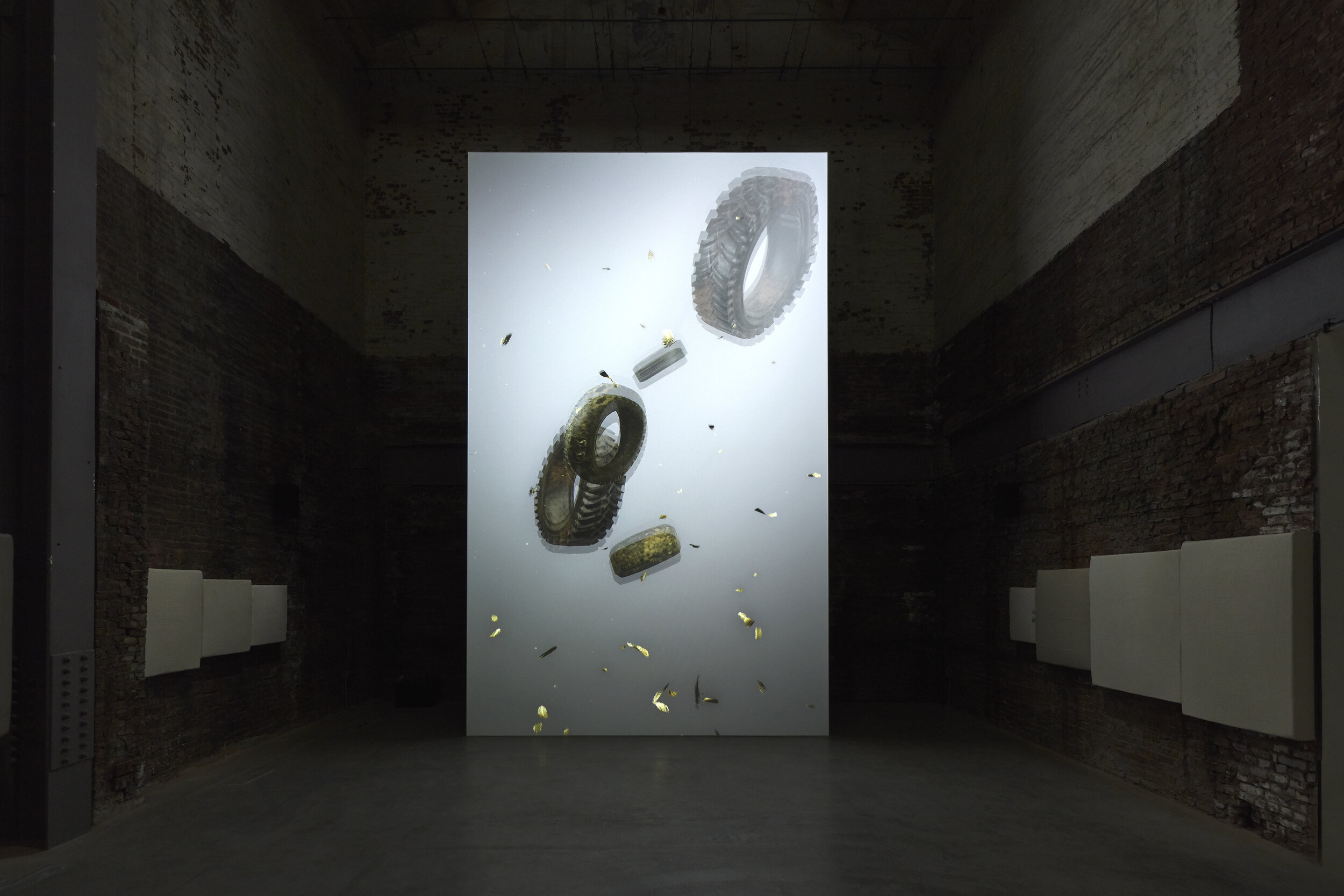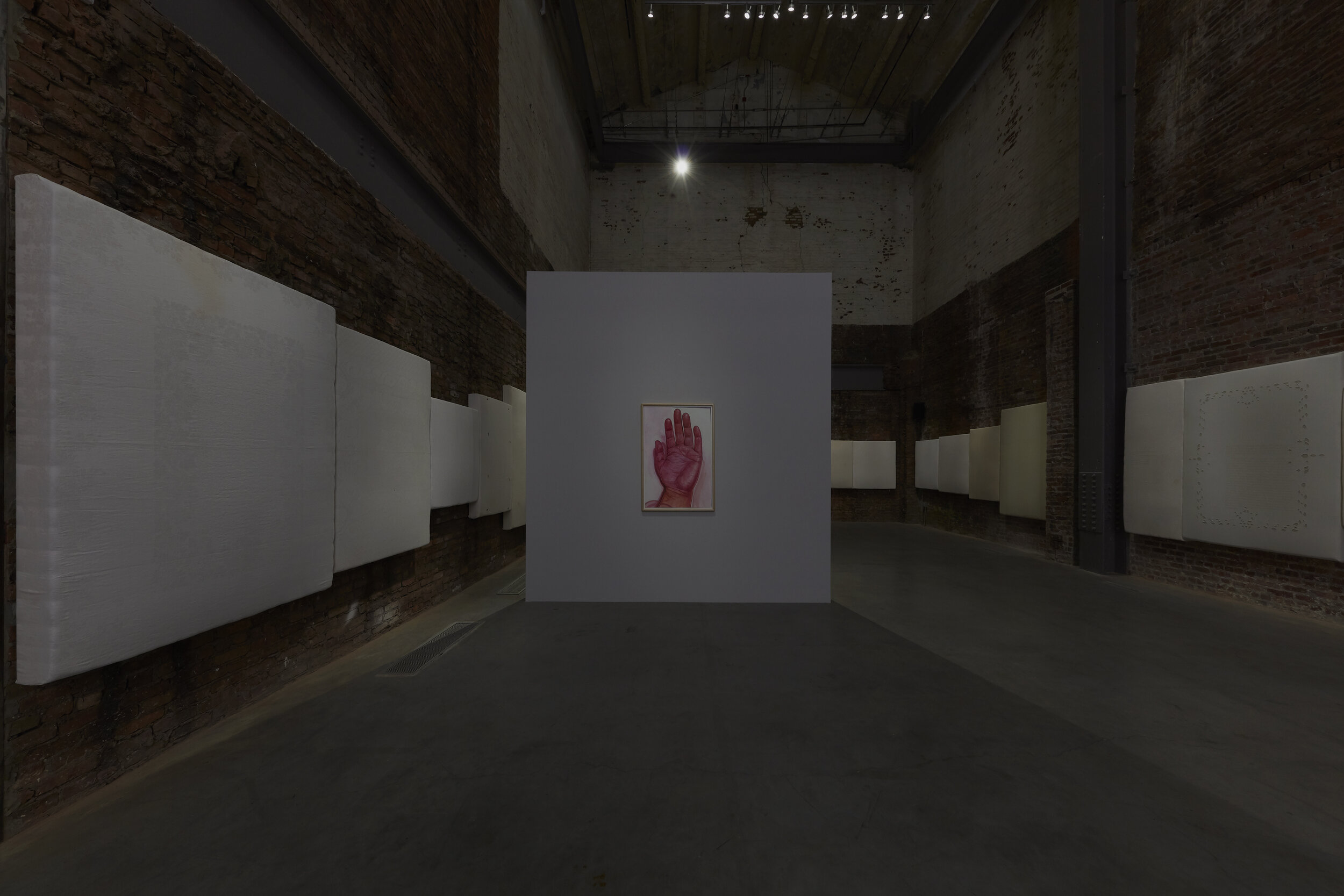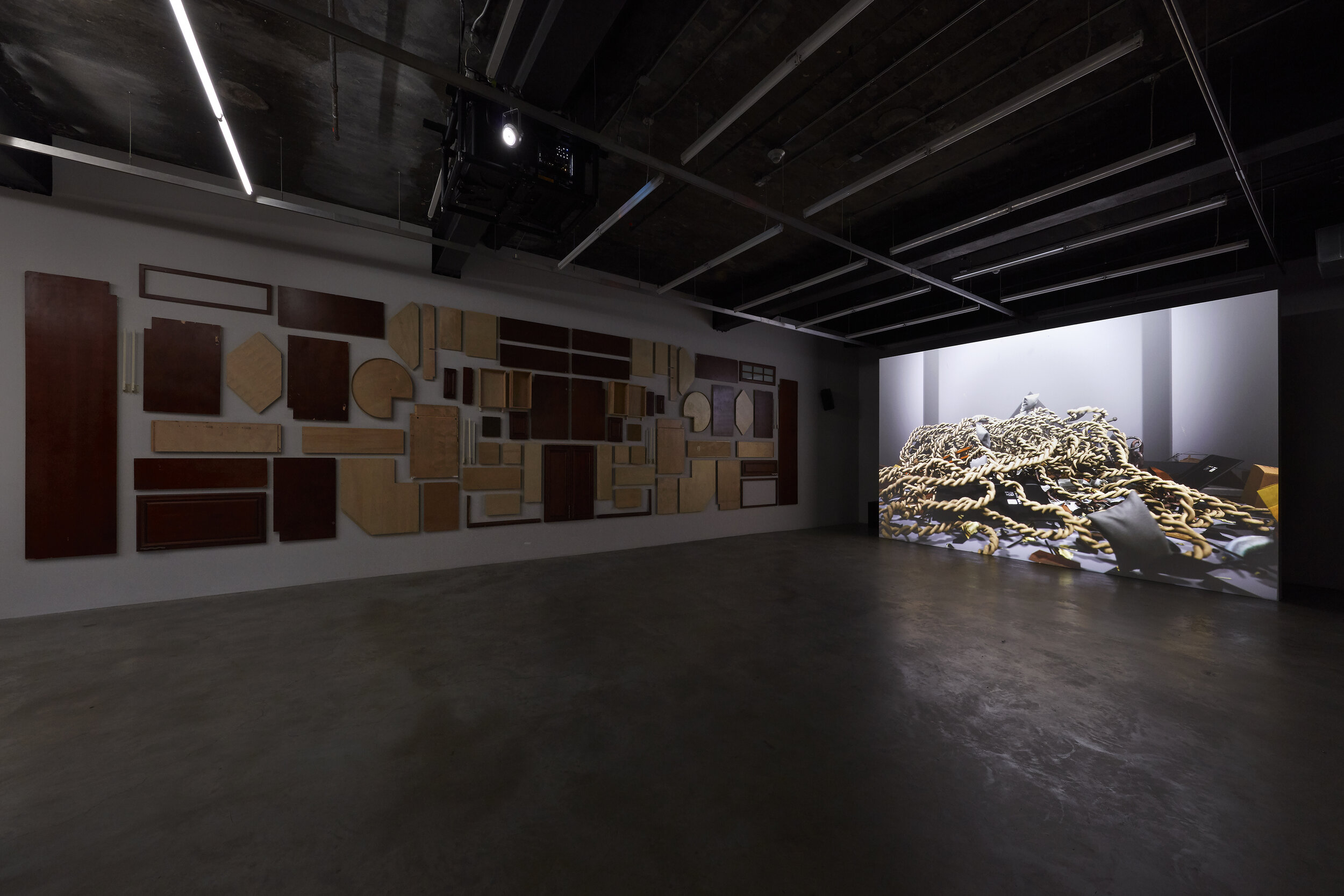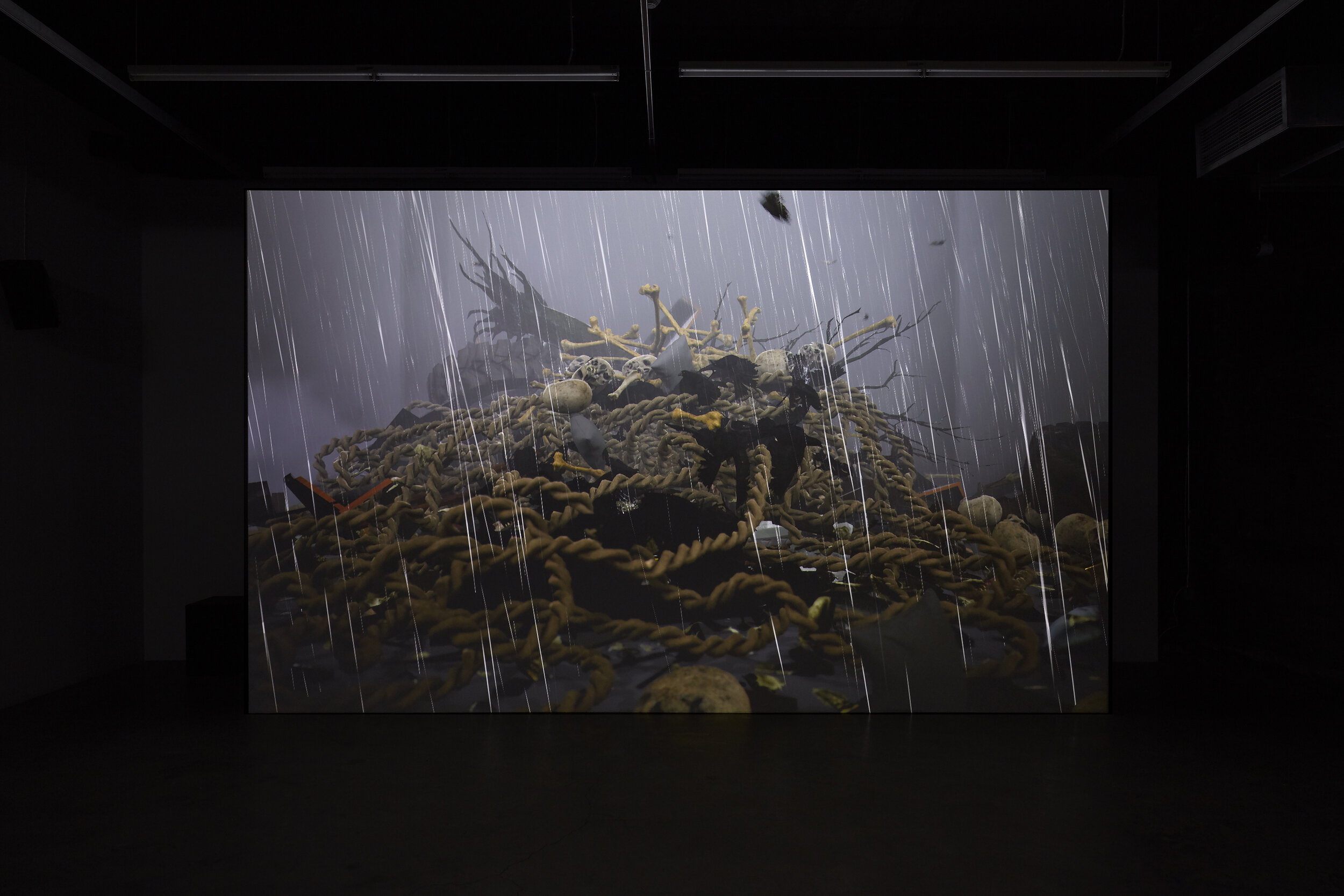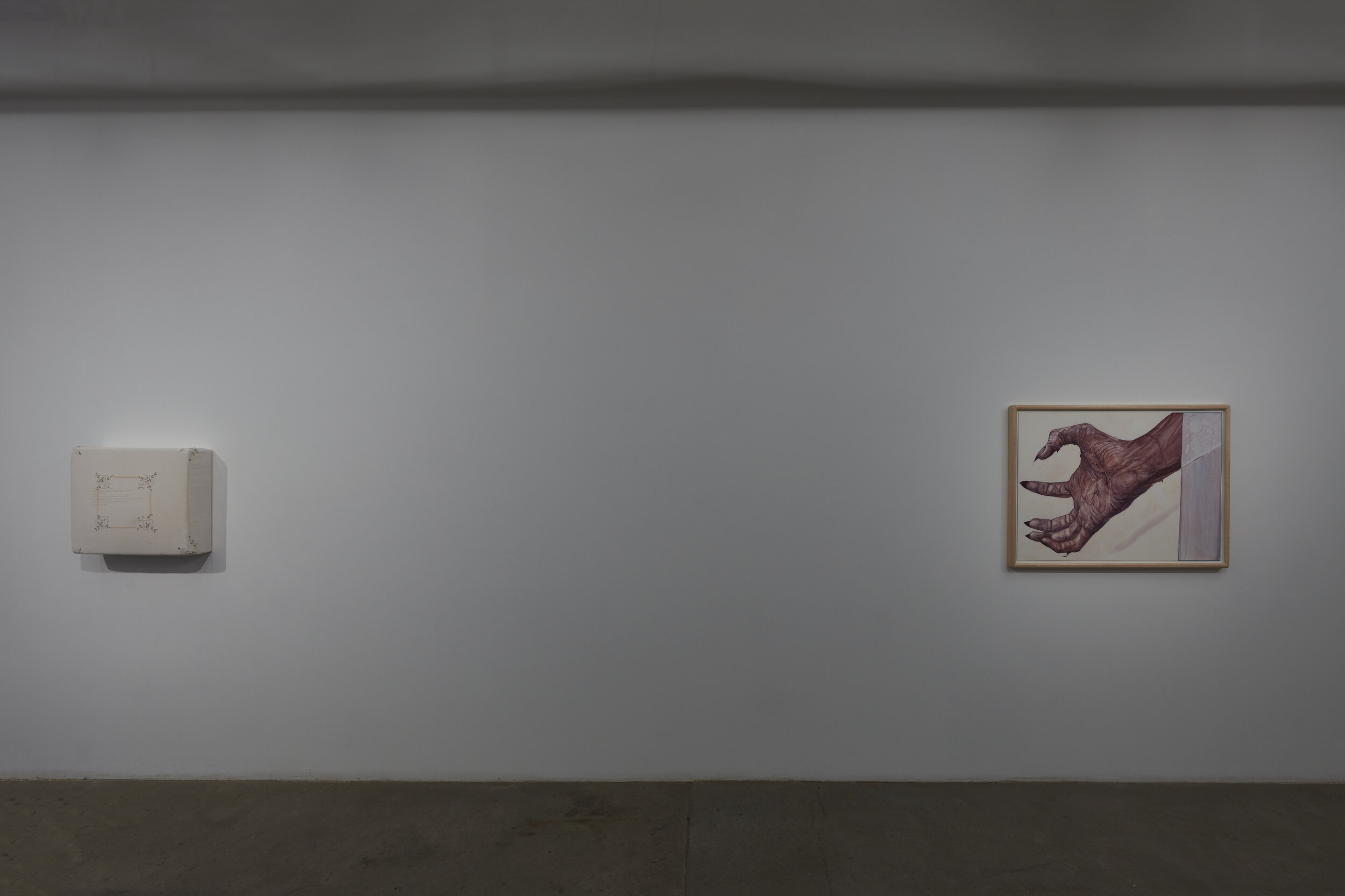I like spit now
Ed Atkins
November 15 - January 19, 2020
@
Gavin Brown’s enterprise
439 W. 127th Street
NY NY 10027
By Petra Bibeau
I like spit now comprises two bodies of work: Refuse splits itself between floor one and four, while Old Food, previously exhibited elsewhere, takes over floor two. I will focus on the new work in Refuse.
If approached mindfully, allowing for the open meditations assembled throughout the exhibition, the video and objects in Refuse gradually unveil themselves as a unified work. As Atkins processes his work through a literary lens, culling references steeped in interpretation and the heightened mortal ambiguity of historicism, suspension of time is required to profit here.
Atkin’s work affect the viewer in multiple sensory frames, that is, you perceive the works and accept an immediate interpretation, but the reality is far darker than Atkins initially reveals. Steeped in arguably obscure reference material, Refuse uses static sculpture (laser engraved hardtack bread, embroidered acoustic panels) to highlight the dysfunctionally treaded paths humans elect to navigate their existence. This is complicated by the understanding or tacit agreement you have already unconsciously made to distrust simulated reality, leaving you challenged by (un)real the horror of it all.
Resisting any slow moving environmental shifts, Refuse immediately places a viewer into a space of havoc, which strangely (and satisfyingly) attempts a complete breakdown and sad redemption all in one orchestrated act. The fortress is Refuse.exe, a massive two-channel real-time 3D simulation authored in a custom version of the game-building software Unreal Engine, and there is little one can do other than subject yourself to its emotional free-fall. The simulation produces a sudden descent of various materials ranging from household objects, building materials, to organic matter, collapsing on top of each other unceremoniously into a pile. The acoustics alone demand every ounce of attention: impressively imposing and unrelentingly present. Described in the press release as “crap falling onto a stage", each unique loop of this exercise begins and ends abruptly, leaving you in a suddenly dark and silent space alone with the cabinetry of a dismantled kitchen on the wall which produces a threadbare comfort after so much defeat.
If Old Food used emotional crash test dummies to support a premise of barren, uneventful lives stuck in a loop, in Refuse Atkins has turned the viewer into a constantly "refreshing background". Put plainly, tragedy in Atkins's work is unyielding, and one is constantly mentally updating one’s position, accepting the artificial in place of reality, or vice-versa. The attraction of conflating a wall of dismantled kitchen cabinetry next to a realtime simulation of the same material being destroyed uniquely purposes the identification gap that we have invited into our daily lives by the broad mixing between the artificial and the real.
Different from Old Food, where you are positioned mostly as a witness, in Refuse Atkins creates wide-open space for reflection on material consumption (daily sustenance) and immaterial consumption (traditions, emotional processes, algorithms, information we use to moralize or demoralize our life) to happen as the work is far from didactic. Atkins pulls from the poetry of William Empson, a proponent of New Criticism, (a "destructive bareness"), highlights painfully vulnerable yet far from enlightening quotes from the Circle Mirror Transformation, (a 2009 play by Annie Baker featuring amateurs learning to act in a windowless room in a community center), positions the Act of Contrition (a Christian Prayer) and Artaud's list of wants in the same room alongside Revelations 18:11. These texts are embroidered onto lightly stained fabric acoustic panels crammed next to one another, some with appliqué. Each of the written selections host elements of passing familiarity, insisting you are somehow a part of their world and nothing to it all to them all at once; either way the world Atkins posits is inescapable.
The chilling feature here is entrapment, not loss.
In the video Refuse.exe, for example, the "crap falling to a stage" does not cease to exist once it lands. It adapts into a new state of being, a demoted state of being. Maybe this is the essence of Atkins's proposal of digression, uselessness and the decline of recuperability, transformed into (sometimes virtual)physical forms which Refuse presents as basis for the entire presentation. The press release describes the work as a piece of theatre reduced to a series of active dualities:
ENTER Drop
ACTION Fall
INTER-ACTION Land
DEATH Cease
REFUSE Remain
This theatrical construction sheds light on the crudest of truths: the (very human) gradual acceptance of the mundane, unsatisfactoriness of life. The intimately devastating theme of all the work in Refuse is intensely managed by hanging on to this futile plateau while watching yourself seek a path around it, like an update attempting a refresh in the background while in the foreground the software is crashing.
Finally, I would posit that to think of entrapment necessarily makes one think of freedom, and the the highly emotive clues that Atkins plays with throughout his practice play at a negotiation between those terms.There are hints of a desire for renewal within the works; this renewal is presented in a light handed way, but it is unmistakable in the selection of texts, the absence of exact repetition in Refuse.exe (every ‘play-through’ is unique), and the cross-examination of Atkins’s many competing narratives. The question of immaterial consumption is raised and left to sink into the harness of debasement in the physical form. With strange juxtapositions of cultural artifacts and the utilitarian and biological — embroidered acoustic panels, hardtack bread with laser engraved text, paintings of pinkened limbs in diagnostic splay — it is through these physical embodiments that what is left unresolved positions itself perfectly as an endless quest.
IMAGES: Ed Atkins, I like spit now, Installation view at Gavin Brown's enterprise New York, November 15, 2019 — January 19, 2020. Courtesy the artist and Gavin Brown's enterprise, New York/Rome. Photo: Thomas Müller.

